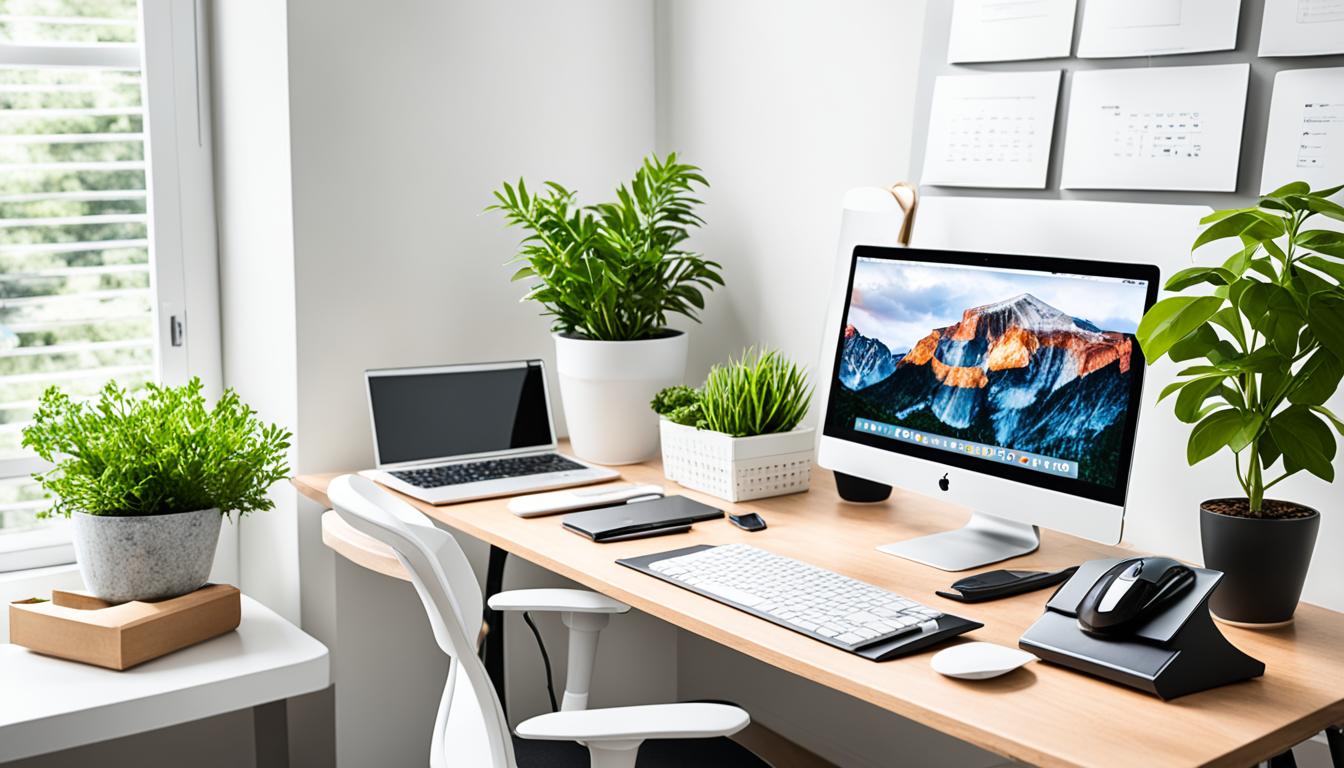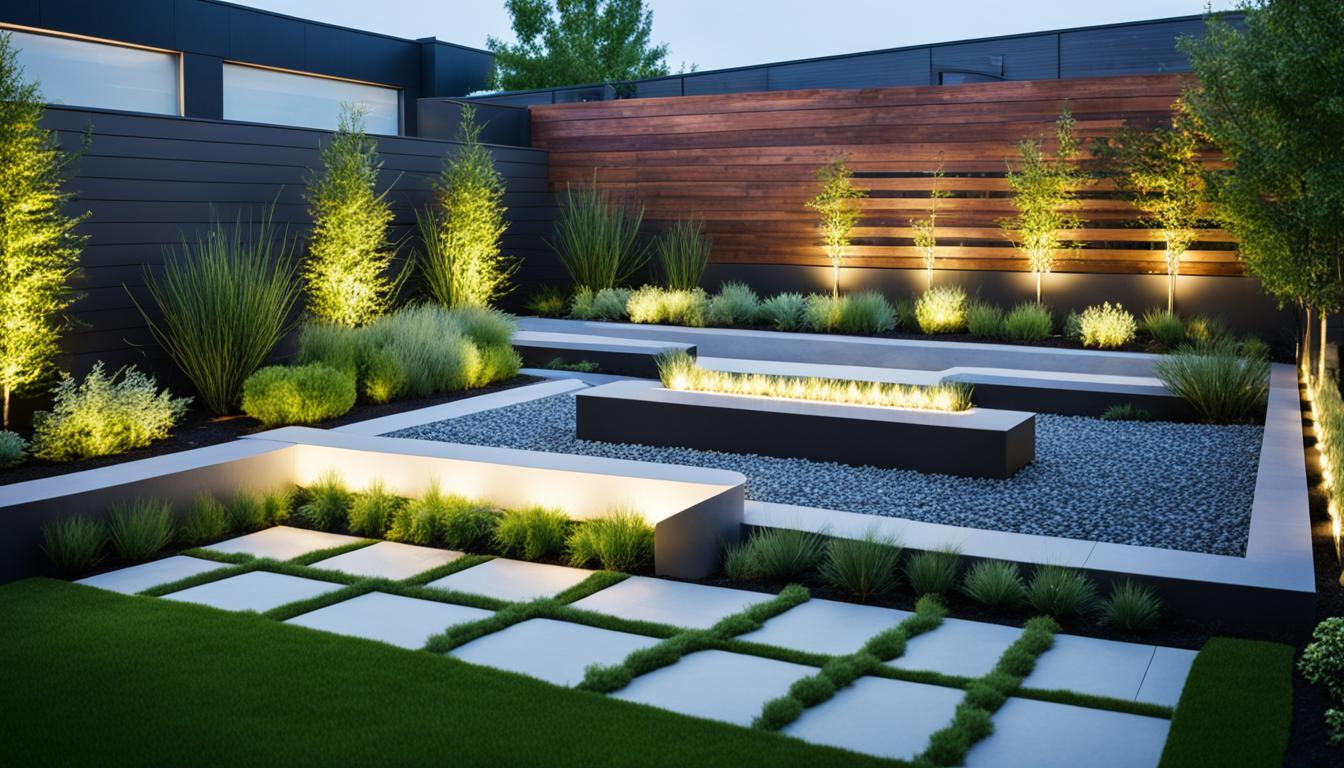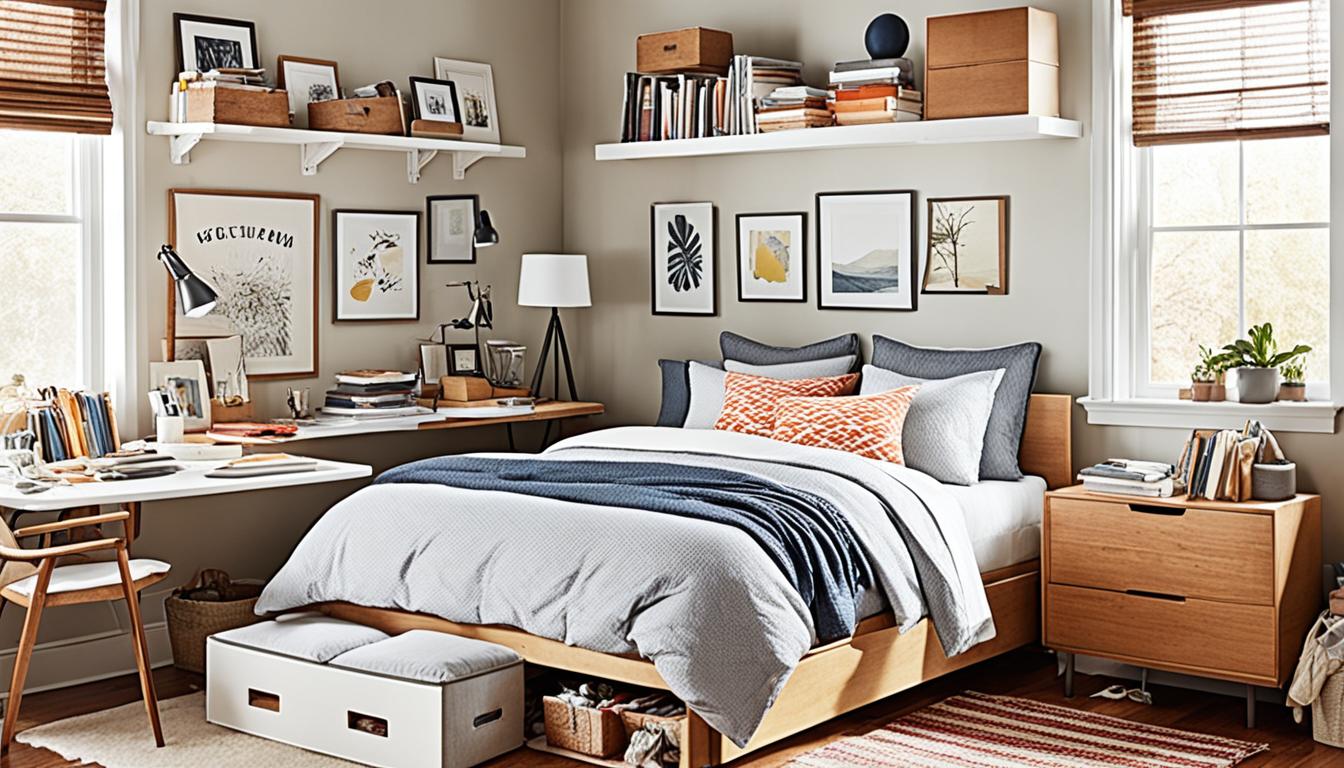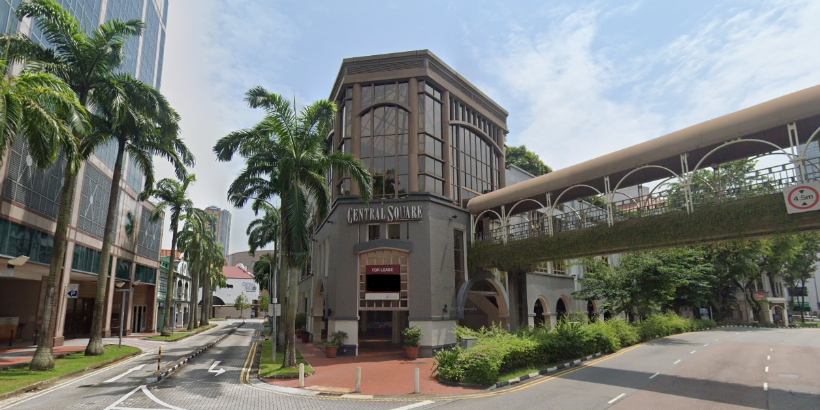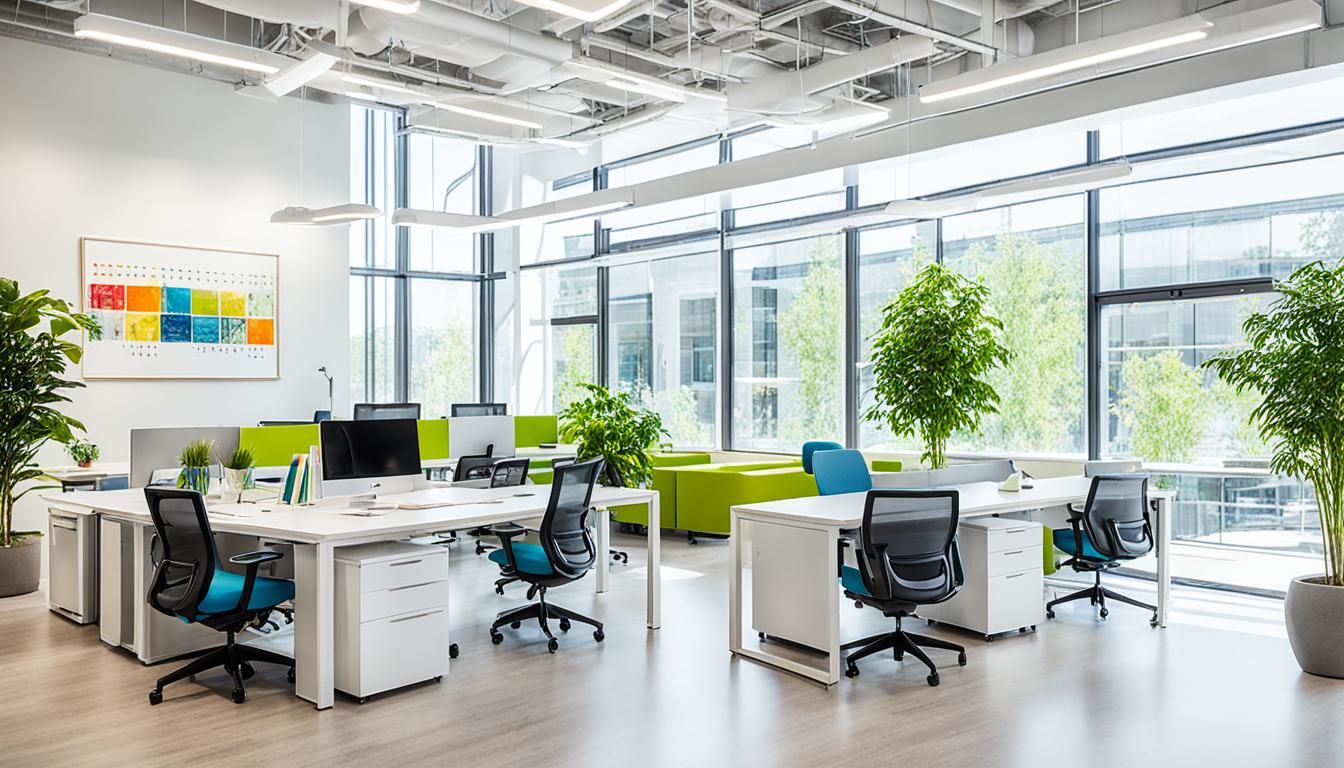
In an astonishing turn of events, companies have just realized that creative office space can spark not just innovation but also a staggering 15% increase in productivity. As we delve into the world of Modern Office Design, one cannot overlook the harmonious blend of aesthetics and function that now defines a Functional Office Layout. The rise of flexible hybrid workplaces, as witnessed at revered institutions like Glenstone, punctuates this trend. Just as software is periodically refreshed to remain effective and efficient, Office Interior Design must be subject to a similar form of transformation to stay relevant to today’s, and tomorrow’s, workforce needs.
Considering Commercial Office Design, it’s vital to mention how spaces are meticulously crafted to enhance collaborative efforts while still providing havens for individual concentration. This intricate dance between solitude and camaraderie within the workspace encourages both cooperation and personal growth. Such environments don’t just happen; they’re the result of a careful design process that understands and anticipates the needs of its users.
Key Takeaways
- Hybrid offices are becoming the architects of future workspaces, demanding adaptability at every level.
- Functional layouts that encourage productivity are key in Modern Office Design, married to the need for collaborative and individual workspaces.
- The integration of nature into Commercial Office Design for productivity and wellness is gaining precedence.
- Creative Office Space is not merely about the visual appeal but about fostering an environment that caters to dynamic work models.
- Effective Office Interior Design can significantly impact employee satisfaction and output.
- The trend of seamless technology integration into office spaces is reshaping how we think about workplace efficiency.
Embracing the Hybrid Workspace Movement
The rise of the Hybrid Workspace is a transformative phase in the evolution of office environments, crafted to foster a Productive Office Environment. In this adaptive model, elements of both traditional and modern Workspace Design converge, propelling us towards a future where flexibility and efficiency are inseparable. At the core of this movement is an understanding that our workspaces must breathe and flex with the rhythms of our changing work styles.
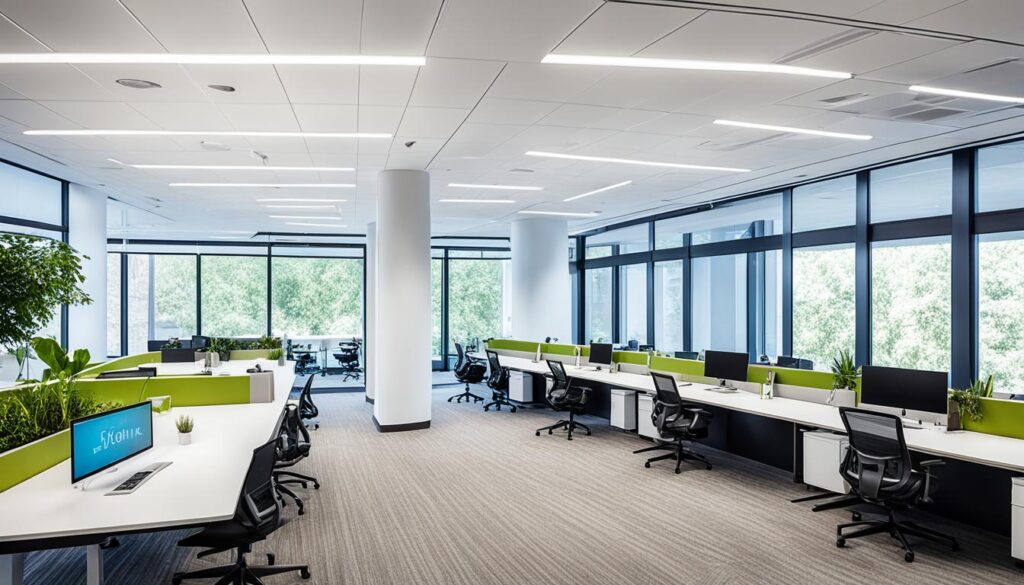

Adaptive Spaces for Concentration and Collaboration
The design of a hybrid workspace emphasizes the harmonious coexistence of areas that cater to deep concentration and those that foster collaboration. It is the orchestration of these environments that breathes life into the concept of a highly tailored and Productive Office Environment. Quiet zones, breakout areas, and thoughtfully designed communal settings are not just features; they embody the versatility of modern work.
Designing for Constant Evolution Reflecting Work Styles
The essence of a thriving hybrid workspace lies in its ability to evolve. Just as technology and workflows adapt, so too must our offices. The philosophy that drives Office Renovation today goes beyond the physical, delving into the psychological needs of a workforce that demands both stability and dynamism. This environment is a canvas, ever-prepared for the next update in our work narrative.
Hybrid Office Design Tips from the 2023 Guide
- Incorporate smart office technology to seamlessly manage hybrid working arrangements.
- Reevaluate space usage to ensure optimal balance between individual workstations and collaborative venues.
- Emphasize flexibility in design to allow quick reconfigurations as team dynamics evolve.
- Invest in ergonomic furniture and accessories to support health and wellbeing in diverse working scenarios.
As we delve into the intricacies of hybrid workspaces, we unlock a realm of possibilities where productivity and innovation are not an aspiration, but a daily reality. The 2023 Hybrid Office Design Guide paves the way, setting forth principles that, when actualized, herald a new era for Workspace Design that is as inspiring as it is efficacious.
Crafting Eye-Catching Office Entrances
The significance of an artfully designed entrance in commercial office design cannot be overstated. It’s at the threshold where potential clients and employees get the first tangible experience of a business’s ethos. Office interior design specialists are championing this sentiment by cultivating entry spaces that both intrigue and welcome.
At the forefront of this evolution is the efficacy of well-chosen, ergonomic office furniture, which stands as a testament to a company’s commitment to comfort and health, serving not just functional needs but also amplifying a brand’s visual narrative.
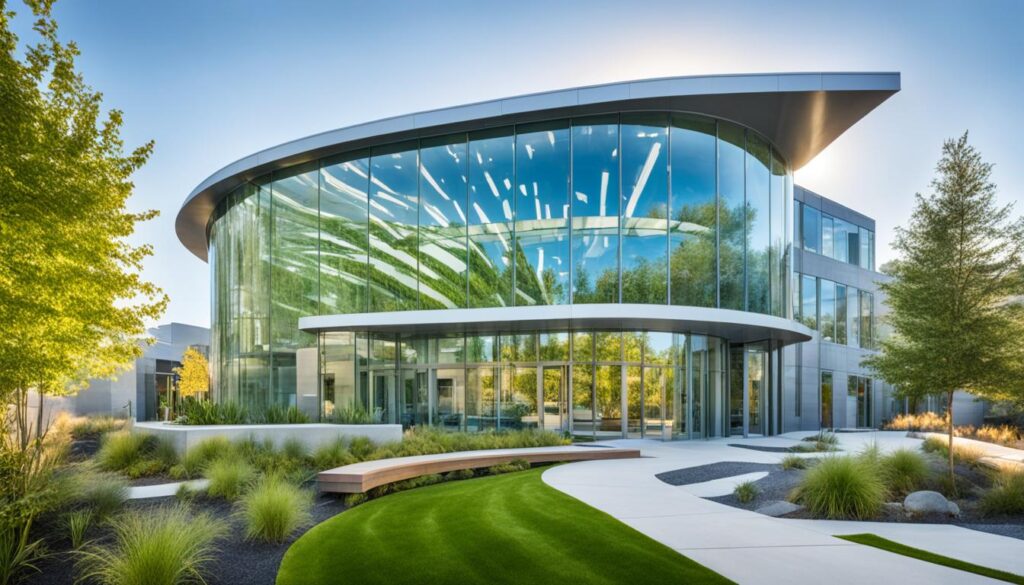

First impressions are instant and powerful, solidified within moments of entry. This plays vitally into the strategic arrangement and aesthetic choice for reception areas, which act as the precursor to the client’s journey through an office space.
- The reception at major firms like Instinctif Partners is a masterclass in brand storytelling, with every element from lighting to layout collectively reflecting the corporate identity.
- Attention to detail in material selection and color palette plays an influential role in setting the mood and aligning with a company’s brand values.
- Ergonomic furniture in waiting areas isn’t merely about providing a place to sit; it’s about extending a silent message of the value placed on visitor and employee well-being right from the outset.
A strategically designed entrance is a tangible introduction to a company’s culture. Leveraging the combined strengths of intelligent commercial office design, sophisticated office interior aesthetics, and ergonomically crafted furniture, businesses can make that crucial first interaction both impressive and enduring.
Maximizing Natural Light for Enhanced Creativity
The transformative effect of natural light within office environments cannot be overstated. When considering modern office design, incorporating elements that promote the influx of sunlight is not only preferred but imperative for fostering an atmosphere where employees can perform at their best. Let’s delve into the impact of natural light and uncover strategic approaches to harnessing this invaluable resource within office interiors.
The Impact of Sunlight on Mood and Productivity
Research has continuously pointed out the significant benefits of natural light in the workplace. Harvard Business Review’s HR poll pinpoints employee preference for natural illumination due to its mood-enhancing qualities. Incorporating natural light in office renovation plans not only brightens workspaces but also plays a crucial part in improving concentration and bolstering overall creativity. Studies suggest that office interior design, which maximizes exposure to daylight, can lead to better sleep patterns, reduced eye strain, and uplifted spirits among staff, resulting in more vibrant and productive office dynamics.
Strategies for Optimizing Natural Illumination in Office Interiors
In the pursuit of modern office design, several strategies can be implemented to ensure workspaces are awash with natural light. Thoughtful architectural planning, for instance, can significantly enhance the accessibility and distribution of sunlight throughout an office’s interior. Here are a few approaches:
- Adopting open-plan layouts that allow light to travel unimpeded across the office.
- Utilizing glazed partitioning to ensure private areas receive ample sunlight without sacrificing confidentiality.
- Strategically positioning workstations to capitalize on the path of natural light during the day.
- Implementing light-reflective surfaces and color schemes to amplify the effects of sunlight.
- Choosing window treatments that maximize light entry while mitigating glare.
Embracing these strategies in office renovation and design endeavors ensures a thriving workplace where natural light seamlessly blends with functionality to enhance well-being and efficiency.
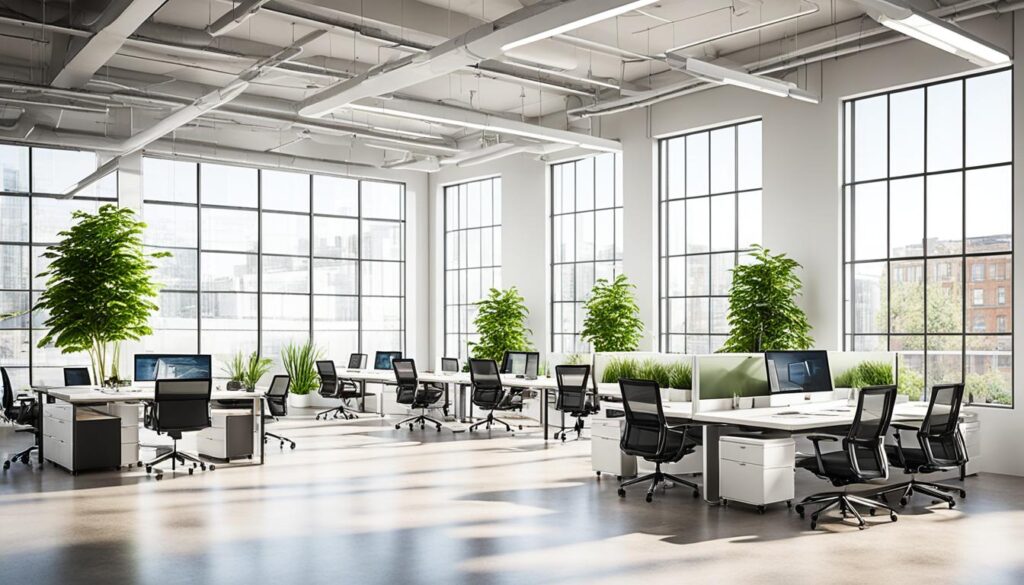

The Significance of Fresh Air and Ventilation in Office Design
In the wake of increased health awareness, particularly following the global pandemic, a major pivot in office interior design emphasizes the critical element of fresh air ventilation. Recognizing that well-ventilated spaces can precipitate a myriad of benefits, contemporary office layouts are being intelligently reimagined to harmonize form with function.
Introducing fresh air into office settings is not only about the subtle breezes that redefine a static environment; it’s about the invitation of the outdoors in, enhancing a sense of wellbeing and invigoration throughout the functional office layout. While we have long understood the psychological uplift that comes from a breath of fresh air, the correlation between ventilation and health is now taking center stage in design conversations.
- Enhanced Air Quality: Proper ventilation systems reduce the concentration of airborne contaminants, leading to a healthier workforce.
- Increased Productivity: The Harvard study highlights a direct connection between improved ventilation and a rise in cognitive function, thereby boosting productivity.
- Reduction in Illness: Fresh air circulation is vital in minimizing the spread of airborne diseases within a creative office space.
- Mental Clarity: Good air quality has been shown to improve concentration and foster a sharper mental state for employees.
As companies revitalize their corporate spaces in this post-COVID-19 era, fresh air access is at the top of the agenda. Strategies now include the installation of advanced ventilation systems and designing spaces that offer employees easy access to outdoor areas, such as terraces or rooftop gardens. By integrating these health-forward considerations into the fabric of office interior design, businesses are cultivating a new standard for workplace environments that takes employee wellbeing to the forefront.
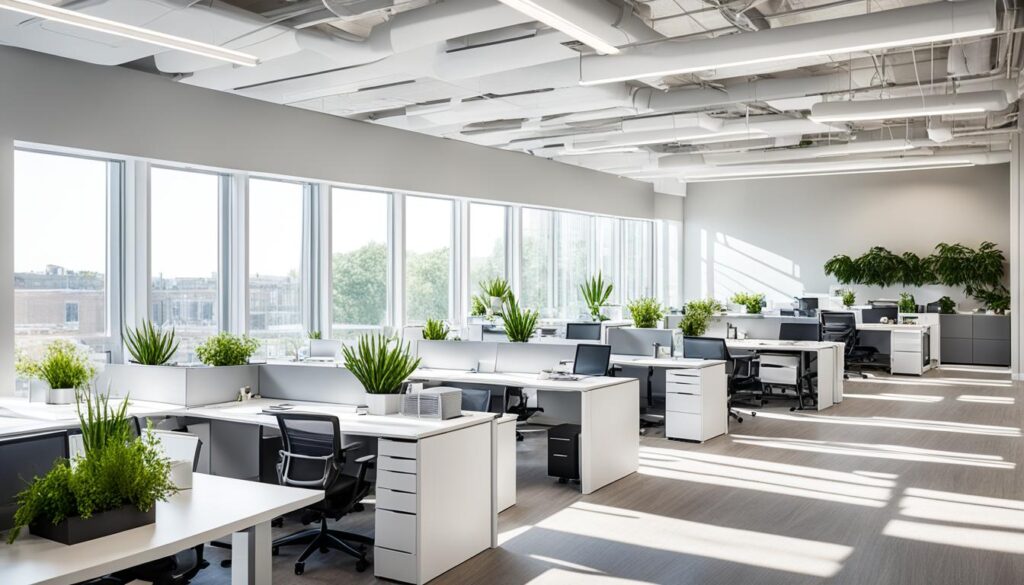

Optimizing Office Space for Agility and Efficiency
In the quest to create a workspace that embodies both agility and efficiency, office design has taken on a new level of sophistication. Innovative strategies are employed to transform traditional workspaces into dynamic areas tailored to enhance productivity and accommodate an increasingly flexible workforce. Capitalizing on advancements in office renovation, workspace design is being re-envisioned to foster an adaptable and effective office environment.
Integrating Intelligent Occupancy Monitoring Systems
The adoption of advanced technologies such as Irisys’s True Occupancy has revolutionized how companies understand and utilize their office spaces. These intelligent systems provide real-time data that influence strategic decisions regarding space planning and management. By tracking how spaces are used, businesses can optimize their environments for maximum efficiency.
- Analyzing desk usage patterns to adjust layouts for enhanced workflow
- Identifying peak occupancy times to allocate resources more effectively
- Reducing real estate costs by pinpointing unnecessary space expenditures
Transforming Underutilized Areas into Productive Workstations
The reconceptualization of stagnant areas into dynamic spaces is a key factor in the modernization of office environments. With an emphasis on ergonomic office furniture, these repurposed zones offer a combination of comfort and utility, aligning with the principles of a productive office environment.
- Converting seldom-used corners into collaborative hubs equipped with ergonomic seating
- Reimagining idle spaces as quiet zones for focused work utilizing adjustable desks
- Integrating flexible furniture arrangements to support various tasks and team configurations
By marrying smart occupancy monitoring with the intelligent reconfiguration of office layouts, businesses not only create a more dynamic workspace environment but also pave the way for employees to thrive in an atmosphere that values both their comfort and adaptability. The interplay of office renovation and the selective incorporation of ergonomic office furniture underpins the ethos of a truly modern, productive office environment.
Infusing Wellbeing into the Workplace Environment
At the heart of a productive office environment is the well-being of its workforce. Designing for workplace wellbeing has become a foreground issue for modern organizations that look to nourish both the physical and mental health of their employees. Office interior design is pivotally positioned to give form to this initiative, embedding well-being into the very fabric of workplace culture. Let’s delve into strategies that are setting the new standard for a health-centric office space.
- Communal spaces that encourage rest and social interaction, helping to alleviate work-related stress.
- Ergonomically designed workstations, featuring adjustable ergonomic office furniture, to combat the physical strain of desk-bound jobs.
- Quiet zones that provide a sanctuary for employees to decompress or engage in focused work, away from the bustle of the workplace.
Mind, a mental health organization, has been a staunch advocate for workplace well-being, highlighting the beneficial impact of these design choices on overall productivity. Office designs that value employee health send a powerful message about company priorities and are integral to attracting and retaining top-tier talent.
It’s not just about the visible aspects of design but also about fostering a culture that prioritizes health. By weaving these elements into the workplace, businesses can craft an environment that not only looks great but feels great too, adhering to the growing philosophy that happy employees are indeed more productive employees.
Office Design
As modern businesses evolve, so too must their environments. Office design today extends far beyond mere aesthetics, meshing functionality with creativity to bolster engagement and productivity. The push towards modern office design is not a fleeting trend but a reflection of a culture that values both form and function in creating spaces that inspire and invigorate. This convergence of visual appeal and practicality defines the future of workspaces, where every design decision is an opportunity to enhance well-being and foster innovation.
Office Renovation Strategies for Modern Businesses
In the realm of office design, renovation has become synonymous with reinvention. Modern office renovation strategies are not just about refurbishing spaces; they are about redefining them. Office renovation today involves a holistic approach that aligns the latest in ergonomic office furniture with creative office space planning to create an ambiance that promotes health and well-being. As the nature of work continues to shift, these spaces offer the adaptability required to meet an ever-changing landscape of needs and preferences.
Expanding Creative Office Space Utilization
Expansion in creative office space utilization is key to fostering an environment that embraces agility. Offices are no longer monolithic structures with a one-size-fits-all approach. Instead, they are mosaic hubs of productivity, where every corner is designed for multipurpose use. The creative office space now epitomizes a sense of freedom and flexibility, ushering in designs that serve a multitude of purposes, from impromptu brainstorming sessions to quiet contemplation areas, thereby catalyzing collaboration and innovation.
Ergonomic Office Furniture for Health and Productivity
Incorporating ergonomic office furniture into the corporate sphere is a commitment to the well-being of the workforce. Opting for ergonomically designed chairs, desks, and accessories can pave the way for a healthier, more engaged, and ultimately more efficient team. Office interior design that prioritizes ergonomics not only minimizes discomfort and the risk of injury but also empowers employees to perform at their best. Ultimately, the investment in furniture that adapts to the user is an investment in the company’s most valuable asset: its people.


